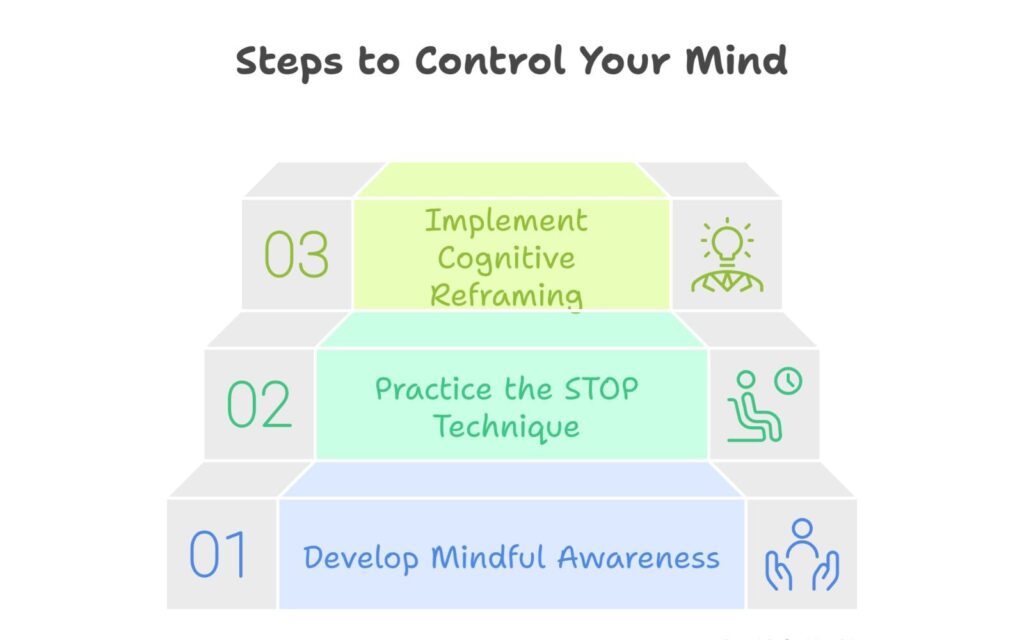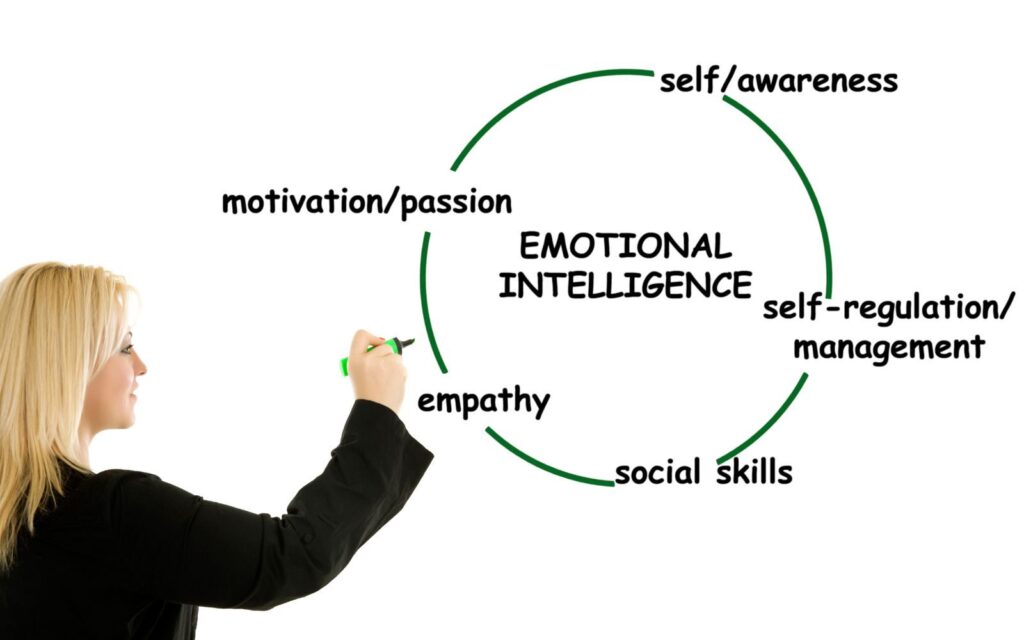Master Your Inner World: How to Control Your Mind and Emotions for Better Work-Life Balance

Did you know that the average person experiences over 6,000 thoughts per day, with 80% of them being negative? Learning how to control your mind and emotions isn’t just about feeling better-it’s about reclaiming your power to respond rather than react to life’s challenges.
Whether you’re overwhelmed by work stress, struggling with relationship dynamics, or simply seeking greater emotional stability, mastering your mental and emotional landscape is essential for sustainable well-being. In our fast-paced world, where external pressures constantly compete for our attention, developing internal control becomes a superpower.
This guide will walk you through evidence-based strategies and practical techniques that I’ve personally tested over years of studying psychology and mindfulness practices. You’ll discover actionable methods to regulate your thoughts, manage emotional responses, and create the balanced life you deserve.
Key Takeaways
- Mental control requires consistent practice of awareness techniques, not perfection
- Emotional regulation improves through understanding triggers and implementing response strategies
- Simple daily habits like mindful breathing and thought observation create lasting change
- Building emotional intelligence enhances both personal well-being and professional relationships
Understanding the Mind-Emotion Connection

The Science Behind Emotional Control
Research from Harvard Medical School shows that our thoughts directly influence our emotional states through neural pathways in the brain. When you learn how to control your mind and emotions, you’re literally rewiring these connections.
The prefrontal cortex, responsible for executive function, can override the amygdala’s fight-or-flight responses. This means that with practice, you can choose your reactions rather than being controlled by them.
Why Most People Struggle with Mental Control
Many individuals feel overwhelmed because they’ve never been taught practical emotional regulation skills. Society often emphasizes external achievements while neglecting internal development.
Additionally, our digital environment creates constant stimulation that makes it challenging to develop the quiet focus necessary for mind control. Breaking this cycle requires intentional effort and sustainable practices.
Practical Strategies to Control Your Mind

Step 1: Develop Mindful Awareness
Start each day with a five-minute awareness practice. Sit quietly and observe your thoughts without judgment, like watching clouds pass in the sky.
Notice patterns in your thinking-are you catastrophizing, ruminating, or jumping to conclusions? This observation creates space between you and your thoughts. Learning how mindfulness boosts workplace productivity can significantly improve your professional performance.
Step 2: Practice the STOP Technique
When you notice negative thought spirals, use this acronym:
- Stop what you’re doing
- Take three deep breaths
- Observe your thoughts and feelings
- Proceed with intention
This simple method interrupts automatic reactions and helps you regain control. I’ve used this technique countless times during stressful work situations, and it consistently helps me respond more thoughtfully. For additional stress management techniques, consider exploring cognitive restructuring methods.
Step 3: Implement Cognitive Reframing
Challenge negative thoughts by asking: “Is this thought helpful? Is it true? What would I tell a friend in this situation?”
Replace catastrophic thinking with balanced perspectives. Instead of “I always mess up,” try “I made a mistake, and I can learn from this experience.”
Mastering Emotional Regulation

Understanding Your Emotional Triggers
Keep a simple emotion log for one week. Note what situations, people, or thoughts trigger strong emotional responses.
Look for patterns-do certain environments or times of day affect your emotional state? This awareness is the foundation of learning how to control your mind and emotions effectively. Understanding the difference between mental health vs emotional health can provide additional insights into your inner world.
The 4-7-8 Breathing Technique
When emotions feel overwhelming, use this proven method:
- Inhale for 4 counts
- Hold for 7 counts
- Exhale for 8 counts
This activates your parasympathetic nervous system, naturally calming both mind and body. Research from the American Institute of Stress confirms that controlled breathing reduces cortisol levels within minutes. For more comprehensive approaches, explore meditation techniques for stress relief.
Creating Emotional Boundaries
Set clear limits on energy-draining activities and relationships. This isn’t selfish—it’s essential for maintaining emotional balance in our interconnected world.
Practice saying “I need some time to think about that” instead of immediately reacting to requests or conflicts. This creates space for thoughtful responses rather than emotional reactions. Developing emotional wellness in the workplace requires these kinds of protective boundaries.
Building Long-Term Mental Resilience

Establishing Daily Practices
The most successful people at emotional control maintain consistent daily habits. Start with just 10 minutes of mindfulness practice each morning.
Combine this with evening reflection, asking yourself: “How did I handle my emotions today? What can I improve tomorrow?” This creates a feedback loop for continuous growth. Consider implementing mindful work breaks for better mental health throughout your day.
Creating Your Supportive Environment
Design your physical and digital spaces to support mental clarity. Remove clutter, limit news consumption, and surround yourself with calming elements.
Consider how your environment affects your ability to control your mind and emotions. Small changes like adding plants or creating mindful break areas can make significant differences. The benefits of green spaces for mental health are well-documented and can support your emotional regulation journey.
Practical Takeaways
- Start each day with 5 minutes of mindful observation to build awareness
- Use the STOP technique whenever you feel emotionally hijacked
- Practice 4-7-8 breathing during stressful moments for immediate calm
- Keep an emotion log for one week to identify your personal triggers
- Create physical and digital boundaries that support your mental well-being
Summary
Learning how to control your mind and emotions is a skill that develops over time through consistent practice and self-compassion. The strategies outlined here-from mindful awareness to cognitive reframing-provide a solid foundation for emotional regulation.
Remember that progress isn’t about perfection; it’s about building resilience and response flexibility. By implementing these evidence-based techniques, you’re investing in both your personal well-being and your ability to show up fully in all areas of life. Exploring natural ways to reduce stress can complement these mental and emotional control strategies.
Start with one technique that resonates with you, practice it consistently for two weeks, then gradually add others. Your future self will thank you for taking this important step toward emotional mastery.
Ready to transform your relationship with your thoughts and emotions? Choose one strategy from this guide and commit to practicing it for the next seven days. Share your experience in the comments below-your journey might inspire others on their path to emotional freedom.
FAQs About How to Control Your Mind and Emotions
How long does it take to learn how to control your mind and emotions?
- Most people notice initial improvements within 2-3 weeks of consistent practice
- Significant changes typically occur after 2-3 months of regular application
- Full emotional regulation mastery is an ongoing lifelong journey
- Start with small daily practices rather than expecting immediate transformation
Can anyone learn emotional control, or is it a natural talent?
- Emotional regulation is a learnable skill, not an inborn trait
- Brain neuroplasticity allows people of all ages to develop these abilities
- Some individuals may have natural advantages, but everyone can improve
- Consistent practice matters more than initial natural ability
What’s the difference between controlling emotions and suppressing them?
- Emotional control involves awareness and conscious response choices
- Suppression pushes emotions down without addressing underlying causes
- Healthy control acknowledges emotions while choosing appropriate responses
- Suppression often leads to emotional buildup and eventual overwhelm
How to control your mind and emotions during high-stress situations?
- Practice breathing techniques like 4-7-8 during calm moments first
- Use grounding techniques: name 5 things you see, 4 you hear, 3 you feel
- Implement the STOP method before reacting to stressful triggers
- Regular mindfulness practice builds resilience for challenging moments
Are there any risks to learning how to control your mind and emotions?
- Healthy emotional control enhances well-being with minimal risks
- Avoid using control techniques to completely avoid processing difficult emotions
- Seek professional help if emotional regulation attempts increase anxiety or depression
- Balance control practices with emotional expression and authentic self-awareness





